Nuggets of News Blog
|  |
Friday, February 24 2023
Whether it’s mining for gold, silver, lead, zinc or other precious metals, it’s always fun to follow in the historic footsteps of the old time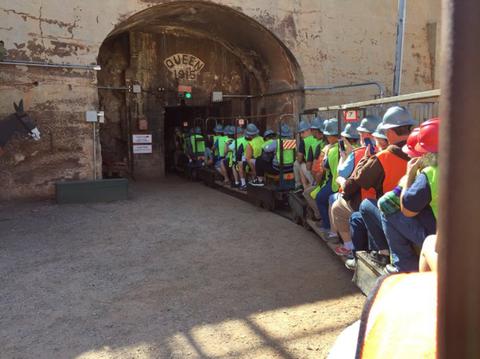 miners. To do exactly that and learn how copper and other ore was first mined in Bisbee, Arizona, take the underground Queen Mine tour. Outfitted with hard hat, miner’s headlamp and a neon vest, visitors ride 1,500 feet into the mine and learn about equipment, techniques, dangers and a century worth of history. Tour guides are actual retired miners, so you know you’ll get the real highlights of working underground. You’ll learn about blasting with dynamite, the role of mules, and even how miners went to the bathroom while working in the mines! miners. To do exactly that and learn how copper and other ore was first mined in Bisbee, Arizona, take the underground Queen Mine tour. Outfitted with hard hat, miner’s headlamp and a neon vest, visitors ride 1,500 feet into the mine and learn about equipment, techniques, dangers and a century worth of history. Tour guides are actual retired miners, so you know you’ll get the real highlights of working underground. You’ll learn about blasting with dynamite, the role of mules, and even how miners went to the bathroom while working in the mines!
Electricity changed the world from a predominantly rural society to the industrial age, and copper wire was needed to carry that electricity— and lots of it. Thanks to the insatiable demand for electricity, Bisbee was one of the greatest copper camps in the world. In nearly 100 years of continuous production (late 1880s until the mine closed in 1975), the local mines produced metals valued at $6.1 billion (at 1975 prices). This staggering amount of wealth came from the estimated production of 8,032,352,000 pounds of copper, 2,871,786 ounces of gold, 77,162,986 ounces of silver, 304,627,600 pounds of lead and 371,945,900 pounds of zinc.
The story of Bisbee mining began in the late 1870s when Lt. Dunn, in charge of a cavalry detail from the frontier Army post of Fort 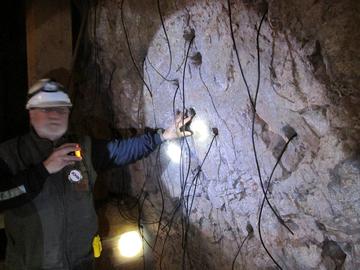 Huachuca, was on a scouting mission against the Apache Indians. Lt. Dunn and his men camped on a spot that is now occupied by Old Bisbee, only several hundred yards from the beginning of today’s mine tour. On a walk after dinner, Lt. Dunn picked up an interesting rock. He found a few more pieces along the slope of the south wall of the canyon. Unable to do anything about it because of military duties, Dunn took a prospector by the name of George Warren into his confidence and struck up a deal by which Warren would locate claims and work the property with Dunn as a partner. But on his way to the site, prospector Warren stopped to enjoy his favorite pastime—drinking whiskey with friends. Warren soon had new partners and staked a group of claims with them, leaving Dunn completely out of the deal. Huachuca, was on a scouting mission against the Apache Indians. Lt. Dunn and his men camped on a spot that is now occupied by Old Bisbee, only several hundred yards from the beginning of today’s mine tour. On a walk after dinner, Lt. Dunn picked up an interesting rock. He found a few more pieces along the slope of the south wall of the canyon. Unable to do anything about it because of military duties, Dunn took a prospector by the name of George Warren into his confidence and struck up a deal by which Warren would locate claims and work the property with Dunn as a partner. But on his way to the site, prospector Warren stopped to enjoy his favorite pastime—drinking whiskey with friends. Warren soon had new partners and staked a group of claims with them, leaving Dunn completely out of the deal.
Copper production began on a limited basis around 1880. At the time, those who toiled in subterranean tunnels beneath the Mule Mountains were mostly immigrant miners from Europe. Individuals and then companies with capital gradually became involved and took over individual claims and brought them into production. Phelps Dodge Corporation, through a subsidiary the Copper Queen Consolidated Mining Company, became the dominant force and eventually the sole operator of the mining district. Building on its base in Bisbee, Phelps Dodge had long been one of the largest copper producers in the United States. Although mining was closed in 1975, the Queen Mine Tour was officially opened in 1976 to keep the story of mining alive in Bisbee. Since then, millions of visitors from around the world have enjoyed the trip into the mountain on the underground mine tour train.
Hour long tours depart each day, seven days a week, from the Queen Mine Tour Building, located immediately south of Old Bisbee’s business district, off the U.S. 80 interchange. Reservations are required for underground tours. Closed toed and low heel shoes are mandatory. For information, reservations, and group rates call 866-432-2071 or visit https://www.queenminetour.com. Be sure to arrive 30 minutes before tour time. Interesting mineral displays, gift shop, and Bisbee Visitor Center are also found in the tour building.
Tuesday, February 14 2023
There are a variety of searchcoil sizes and shapes and configurations. The correct one to use depends on the environment it will be used in as well as the targets being sought. A change in any one of these variables may require a different searchcoil. Sometimes changing the search coil on your metal detector is the next best thing to buying a whole new machine! It is possible that merely changing the coil on your detector will lead you to a host of new targets. used in as well as the targets being sought. A change in any one of these variables may require a different searchcoil. Sometimes changing the search coil on your metal detector is the next best thing to buying a whole new machine! It is possible that merely changing the coil on your detector will lead you to a host of new targets.
CONFIGURATIONS
In addition to searchcoil sizes and shapes, there are also a variety of searchcoil configurations available, with each proving to be the best choice depending on hunting applications and ground conditions. The configuration of a searchcoil refers to the arrangement of the Transmit Coil (TX) and Receive Coil (RX) within the searchcoil shell. The most common configurations are: Concentric, Mono, Imaging, and Double-D.
Concentric
The concentric configuration consists of a TX coil and RX coil which are usually circular. The advantage of this configuration is that both the TX and RX coils are wound as large as possible within a given searchcoil diameter. This provides the largest possible detection fi eld and greatest detection depth, making the concentric coil potentially the most sensitive confi guration available. In addition, concentric coils also provide the most symmetrical detection field, allowing ease in pinpointing and consistency in target identification. For these reasons, they are the most commonly used searchcoil and will provide the best overall performance in most environments. Unfortunately, this configuration is the most susceptible to interference from ground minerals, which results in substantial loss of performance when used over heavily mineralized ground.
Mono
A mono-coil is available only on Pulse Induction detectors, such as Garrett's new Axiom Metal Detector, and is a variation of the concentric configuration. The mono-coil can be manufactured with the TX and RX coils located together or as a single coil acting as both TX and RX. The detection and performance characteristics of the mono are essentially the same as the concentric in that it provides the maximum possible sensitivity, but suffers some performance in mineralized ground.
Imaging
An Imaging searchcoil is an enhanced version of the concentric configuration that features an additional RX coil. This extra coil provides the detector with additional target information necessary for true target-depth perception and true target-sizing capabilities. With this additional sizing information, the detector can more fully characterize a target and for the first time distinguish between trash and good targets of the same conductivity (e.g. a quarter vs. a soda can). Only the Garrett GTI metal detector offers this technology.
DD Search coils have two smaller “D” shaped coils housed inside to penetrate heavily mineralized ground that is commonly encountered while gold prospecting and relic hunting. The Double-D configuration is designed to  significantly reduce ground interference and, thereby, recover the performance lost by a concentric coil over mineralized soil. With the Double-D, it is the arrangement of the TX and RX coils that produce a canceling effect of ground signals. This configuration is called DD because both TX and RX coils are in the shape of a “D”. The positive detection fi eld of the DD runs beneath the overlapping center section from front-to-back. The remaining portion of the coil actually produces negative (i.e. canceling) detection fields. It is this canceling field that allows the DD coil to maintain performance over mineralized ground. Because of its small positive detection field, the DD is inherently less sensitive than a concentric searchcoil of the same size, over non-mineralized ground. The Double-D will, however, significantly outperform the concentric coil over mineralized ground. For this reason, it is highly recommended when hunting over mineralized ground commonly found when prospecting and relic hunting. significantly reduce ground interference and, thereby, recover the performance lost by a concentric coil over mineralized soil. With the Double-D, it is the arrangement of the TX and RX coils that produce a canceling effect of ground signals. This configuration is called DD because both TX and RX coils are in the shape of a “D”. The positive detection fi eld of the DD runs beneath the overlapping center section from front-to-back. The remaining portion of the coil actually produces negative (i.e. canceling) detection fields. It is this canceling field that allows the DD coil to maintain performance over mineralized ground. Because of its small positive detection field, the DD is inherently less sensitive than a concentric searchcoil of the same size, over non-mineralized ground. The Double-D will, however, significantly outperform the concentric coil over mineralized ground. For this reason, it is highly recommended when hunting over mineralized ground commonly found when prospecting and relic hunting.
It’s important to know the benefits of using various size, shape and configurations of coils because simply changing the search coil on your metal detector is the next best thing to buying a whole new machine! Garrett is the global leader of ground search metal detectors, pinpoints, coils, and other accessories. Browse Garrett detectors and more.
Part 1 covered search coil size, shape and depth.
Monday, February 13 2023
The searchcoil is a vital part of your metal detector. It generates a magnetic field and senses metallic targets in the surrounding environment. The size and depth of the magnetic field is determined by the shape and size of the searchcoil. Understanding the purposes behind the various sizes and shapes of searchcoils will empower you with the ability to choose the best coil for each application.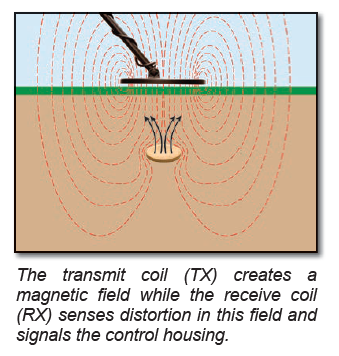
HOW SEARCHCOILS WORK
Searchcoils generally consist of two internal sets of coiled wires, a Transmit Coil (TX) and a Receive Coil (RX). Mono coils can be different in that one coil acts as both the TX and the RX. When the detector is turned on, the TX coil generates a magnetic field in the surrounding space. When a metallic object is within this generated magnetic field, it will create a distortion in the magnetic field. The RX coil will sense this distortion and send a signal to the control housing. A searchcoil’s detection pattern is determined by the combination of the TX’s generated field pattern and the RX’s sensing field pattern.
SEARCHCOIL DEPTH
The detection depth of a searchcoil, as a rule-of-thumb, will be approximately equal to its diameter, for a coin-sized object. However, as a searchcoil’s size increases and its field pattern becomes larger, the field pattern becomes less concentrated and begins to miss small objects. For a coin-sized object, this effect becomes noticeable when using searchcoils larger than about 15" in diameter. Since the field generated by a large searchcoil is larger, deeper and less concentrated than a small searchcoil, it is the best choice when hunting for targets that are usually large and deeply buried, such as caches or relics. there is a direct relationship between the size of a magnetic fi eld and the size of a coil. The bigger the coil, the larger the magnetic fi eld. Therefore, larger searchcoils generally detect deeper than smaller searchcoils.
SEARCHCOIL SIZES
- Smaller Search Coils (less than 6" in diameter): Great for “trashy” areas, really allowing you to sift through metal debris. These coils are best for tighter places and the smallest, shallow targets. Because the magnetic field of a small search coil is concentrated within a small volume, it is the best choice for hunting in areas with a lot of metal debris. This allows you to maneuver through and around trash to locate good targets, especially when searching in tight places where large searchcoils cannot go. In addition, because of their concentrated detection field, small searchcoils are the best for detecting very small objects. However, a small searchcoil provides less coverage per sweep; more scans will be required to cover a search area.
- Medium Search Coils (6-11" in diameter): Usually come standard with your metal detector, medium search coils are designed for general use in finding the broadest range of targets in the broadest range of environments. For general-purpose hunting, which typically includes coins and coin-sized targets, a medium sized searchcoil (8 - 9") is the best choice. Because a medium sized searchcoil provides the best combination of magnetic field concentration, detection depth and capability to detect the greatest range of target sizes within the detection area, it is standard with most detectors. In addition, it’s lightweight and easy to maneuver.
- Large Search Coils (over 11" in diameter): The larger the search coil, the deeper it will penetrate the ground. Great for finding caches or relic hunting, finding deeply buried, large targets. Large searchcoils generate wider and deeper magnetic fields than small coils and consequently provide greater depth and coverage. This means that scanning a search area requires fewer sweeps with a large searchcoil than with a smaller coil. This larger scan area, however, can become a problem in trashy areas where the search coil is detecting several targets at once.
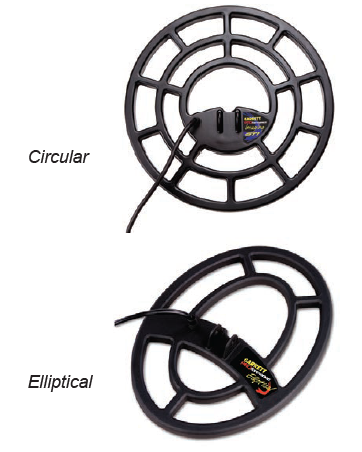
SEARCHCOIL SHAPES
Generally, search coils are circular or elliptical in shape. An elliptical searchcoil is more maneuverable than a circular searchcoil and its narrow width actually provides greater coverage than a circular coil due to its elongated length. However, a circular searchcoil has slightly more detection depth and sensitivity in non-mineralized soil, so it is still the most commonly used shape.
It’s important to understand the pros and cons of using various size, shape and configurations of coils because simply changing the search coil on your metal detector is the next best thing to buying a whole new machine! Most metal detectors come with a standard search coil that is good for general use – finding the broadest range of targets in the broadest range of environments. But search coils come in all shapes and sizes, and it's possible that merely changing the coil on your detector will lead you to a host of new targets in that “hunted out” area.
Garrett is the global leader of ground search metal detectors, pinpointers, coils, and other accessories. Browse Garrett detectors and more.
Part 2 — search coil configurations
Wednesday, February 08 2023
Grab your Garrett metal detector and accessories and head to Canton, Texas, April 14-16 for their Memorial Hunt! Ti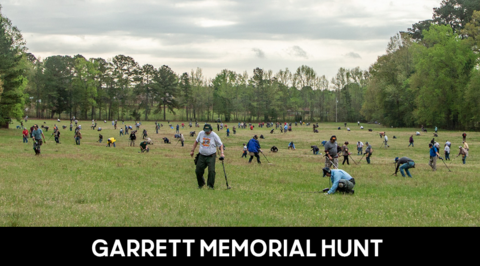 cket registration for the Garrett Memorial Hunt closes in less than a month, and with over $100,000 worth of prizes, you don't want to miss out. The more hunters who sign up, the more this value will increase! Tickets are limited, so be sure to secure your spot before they sell out. Sign-ups end March 1, 2023! cket registration for the Garrett Memorial Hunt closes in less than a month, and with over $100,000 worth of prizes, you don't want to miss out. The more hunters who sign up, the more this value will increase! Tickets are limited, so be sure to secure your spot before they sell out. Sign-ups end March 1, 2023!
Details:
Friday, April 14, through Sunday, April 16 in conjunction with Texas Association of Metal Detecting Clubs (TAMDC). The event will be held at:
First Monday (flea market grounds)
800 First Monday Lane
Canton, TX 75103
Basic Hunt Package:
- One hunt package fee covers all Garrett events!
- Participation in several prize hunts
- One Garrett Memorial Hunt T-shirt (if the hunt fee is paid before the deadline).
- Free First Monday park admission and tent camping (RV camping requires an additional fee).
- Hunters are free to search throughout the designated park grounds for native coins and relics.
- Additional details, hotel information, etc. found here.
Plenty of Fun for All Ages!
- Meet other treasure hunters and find some treasure! Or explore Canton's historic district and local museums.
- Free Kids Hunt for ages 12 and under.
- All prizes will be awarded! A random drawing will be conducted for unclaimed prizes.
- Treasure talk on Saturday by Jase Robertson, star of Duck Family Treasure TV show!
- Picnic and coolers allowed. Concessions available in Civic Center building on Saturday and Sunday.
Whether it's time to buy your first Garrett metal detector, an upgraded model, or additional coils, headphones, carry bag or other accessories, check out the selection of Garrett treasure hunting items here.
|






 miners. To do exactly that and learn how copper and other ore was first mined in Bisbee, Arizona, take the underground Queen Mine tour. Outfitted with hard hat, miner’s headlamp and a neon vest, visitors ride 1,500 feet into the mine and learn about equipment, techniques, dangers and a century worth of history. Tour guides are actual retired miners, so you know you’ll get the real highlights of working underground. You’ll learn about blasting with dynamite, the role of mules, and even how miners went to the bathroom while working in the mines!
miners. To do exactly that and learn how copper and other ore was first mined in Bisbee, Arizona, take the underground Queen Mine tour. Outfitted with hard hat, miner’s headlamp and a neon vest, visitors ride 1,500 feet into the mine and learn about equipment, techniques, dangers and a century worth of history. Tour guides are actual retired miners, so you know you’ll get the real highlights of working underground. You’ll learn about blasting with dynamite, the role of mules, and even how miners went to the bathroom while working in the mines! used in as well as the targets being sought. A change in any one of these variables may require a different searchcoil. Sometimes changing the search coil on your metal detector is the next best thing to buying a whole new machine! It is possible that merely changing the coil on your detector will lead you to a host of new targets.
used in as well as the targets being sought. A change in any one of these variables may require a different searchcoil. Sometimes changing the search coil on your metal detector is the next best thing to buying a whole new machine! It is possible that merely changing the coil on your detector will lead you to a host of new targets. significantly reduce ground interference and, thereby, recover the performance lost by a concentric coil over mineralized soil. With the Double-D, it is the arrangement of the TX and RX coils that produce a canceling effect of ground signals. This configuration is called DD because both TX and RX coils are in the shape of a “D”. The positive detection fi eld of the DD runs beneath the overlapping center section from front-to-back. The remaining portion of the coil actually produces negative (i.e. canceling) detection fields. It is this canceling field that allows the DD coil to maintain performance over mineralized ground. Because of its small positive detection field, the DD is inherently less sensitive than a concentric searchcoil of the same size, over non-mineralized ground. The Double-D will, however, significantly outperform the concentric coil over mineralized ground. For this reason, it is highly recommended when hunting over mineralized ground commonly found when prospecting and relic hunting.
significantly reduce ground interference and, thereby, recover the performance lost by a concentric coil over mineralized soil. With the Double-D, it is the arrangement of the TX and RX coils that produce a canceling effect of ground signals. This configuration is called DD because both TX and RX coils are in the shape of a “D”. The positive detection fi eld of the DD runs beneath the overlapping center section from front-to-back. The remaining portion of the coil actually produces negative (i.e. canceling) detection fields. It is this canceling field that allows the DD coil to maintain performance over mineralized ground. Because of its small positive detection field, the DD is inherently less sensitive than a concentric searchcoil of the same size, over non-mineralized ground. The Double-D will, however, significantly outperform the concentric coil over mineralized ground. For this reason, it is highly recommended when hunting over mineralized ground commonly found when prospecting and relic hunting.

